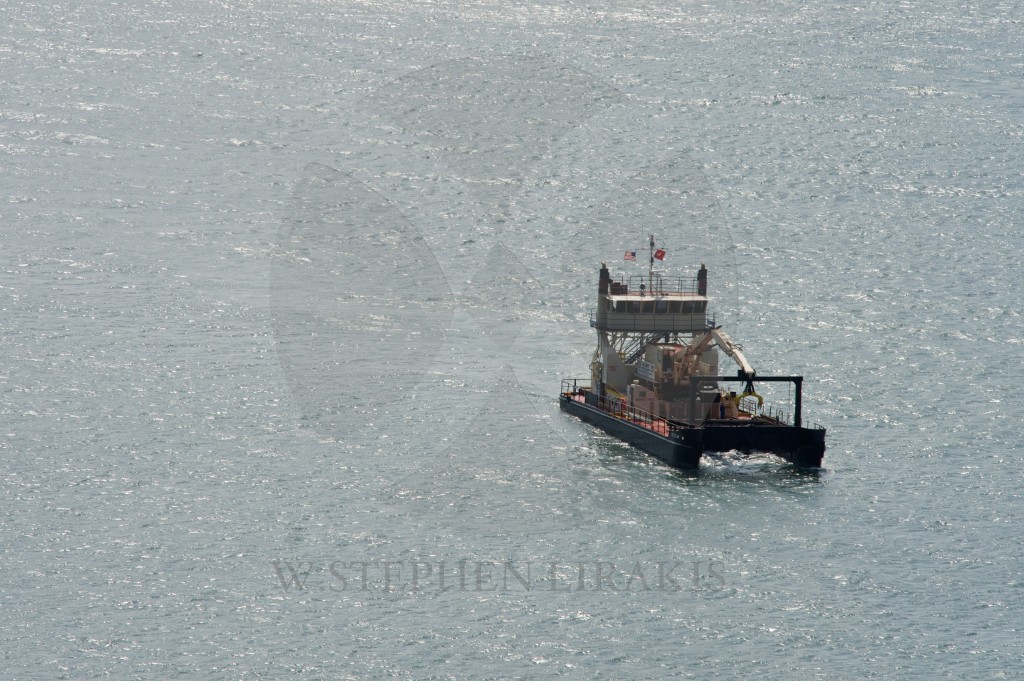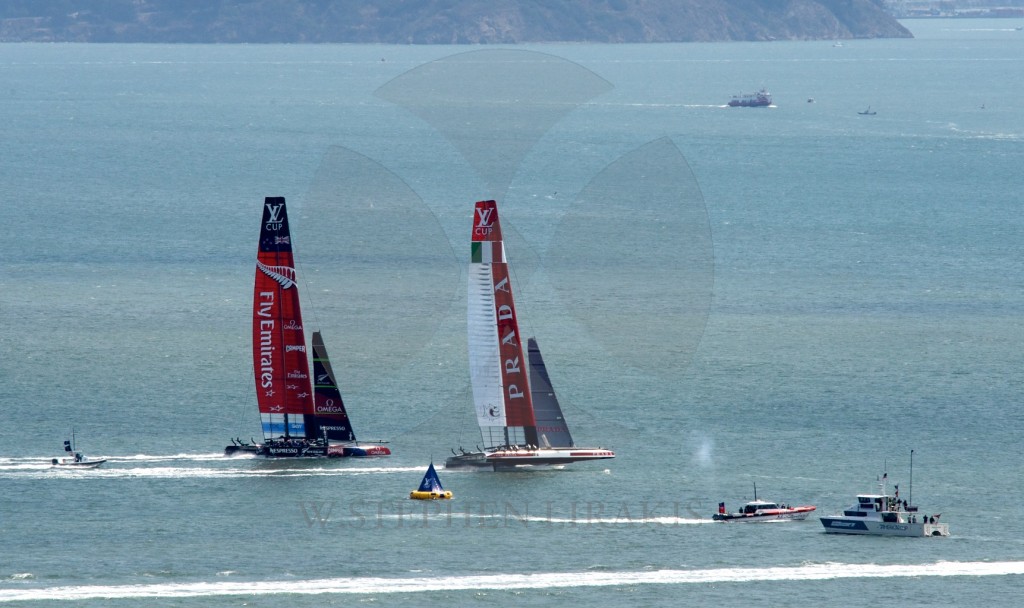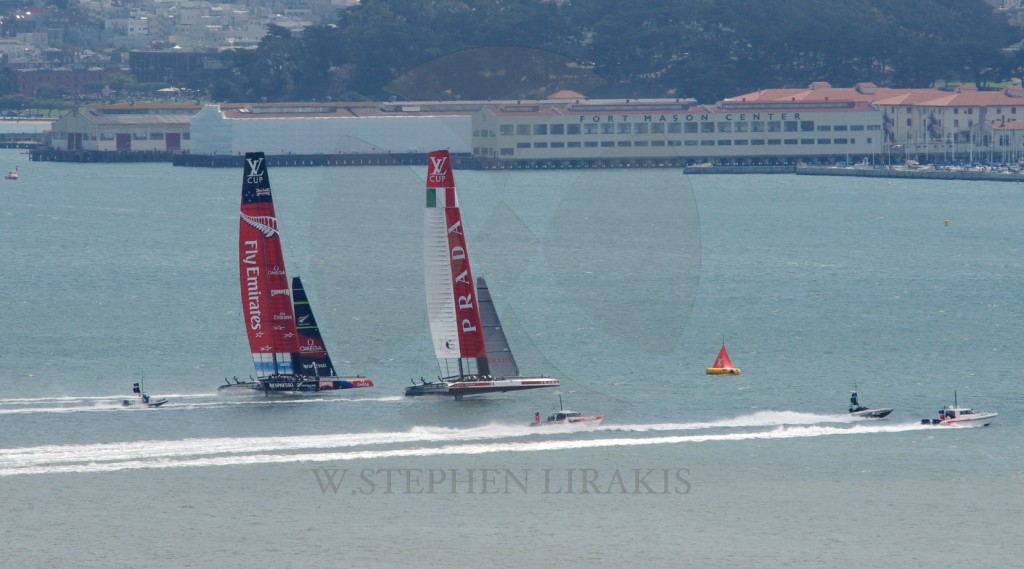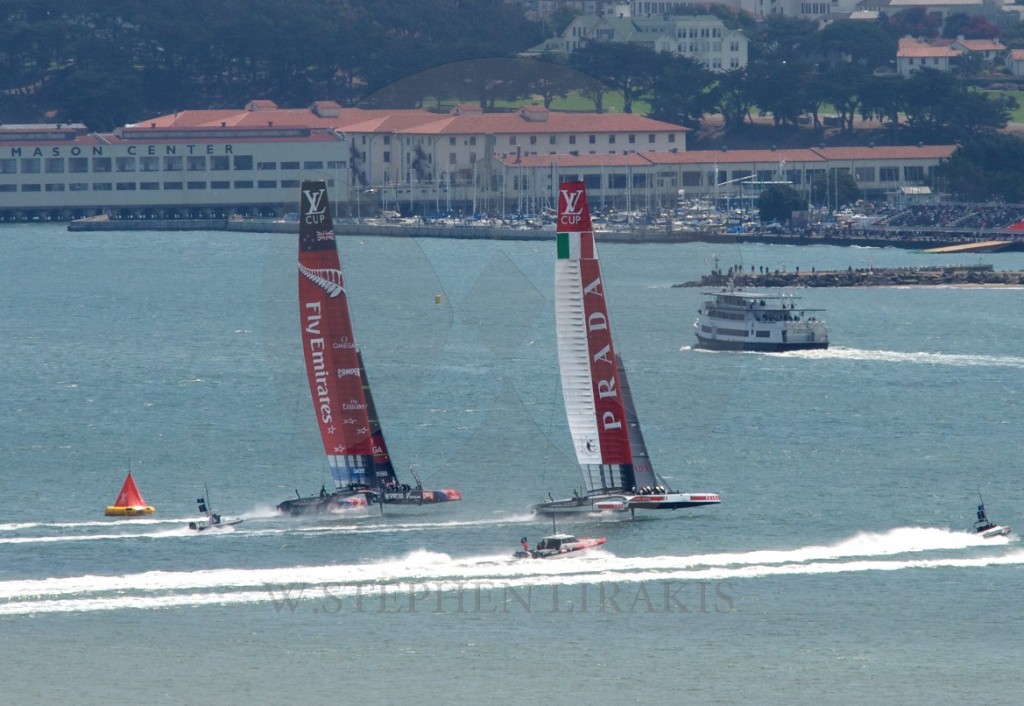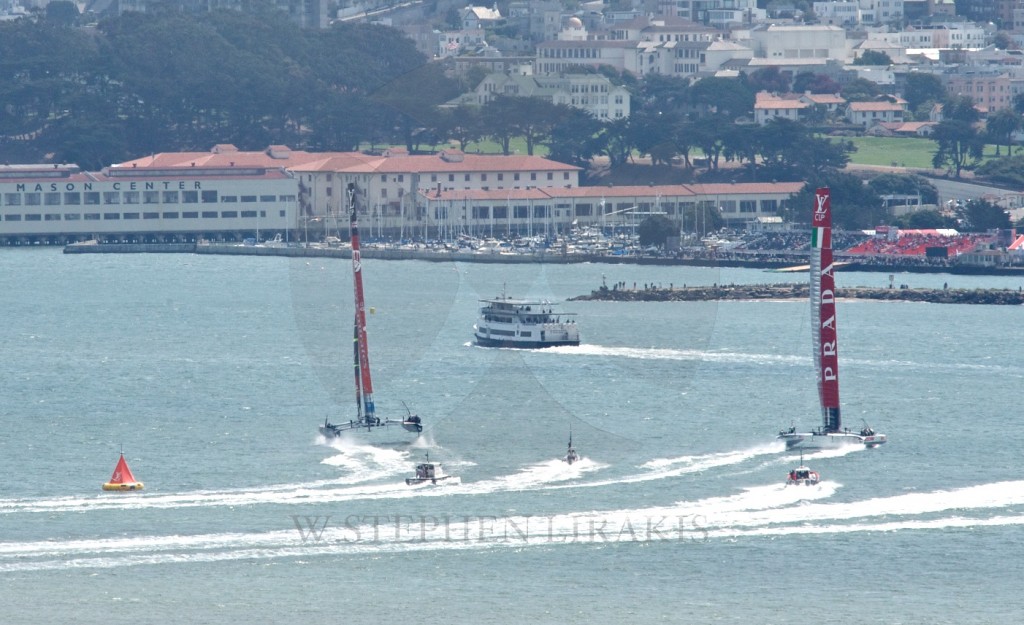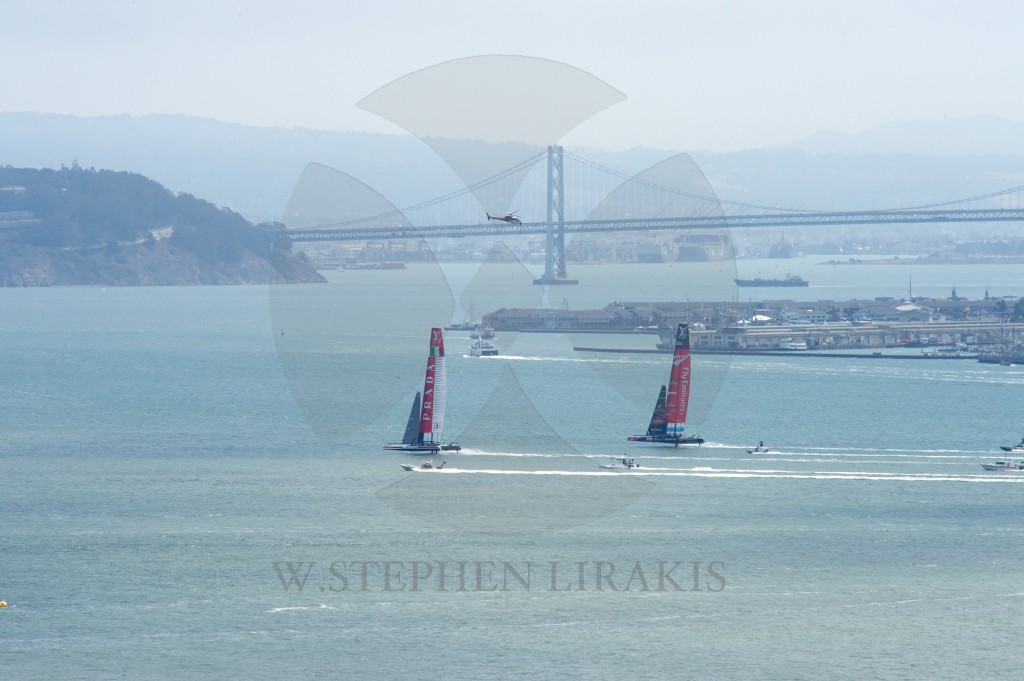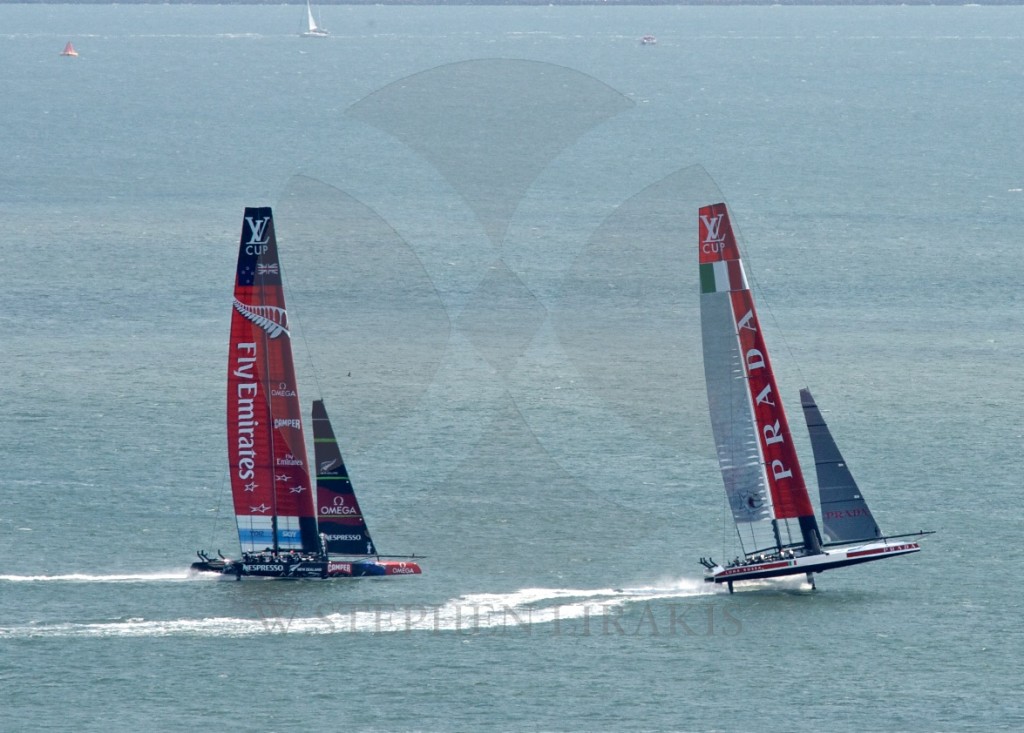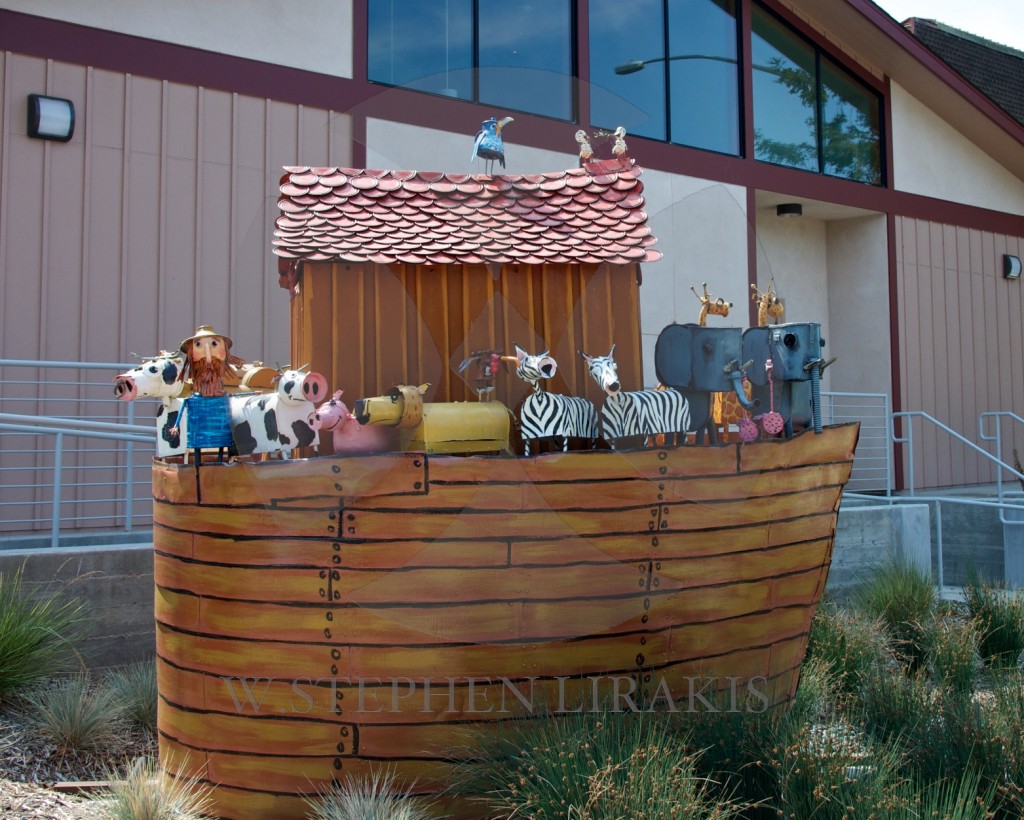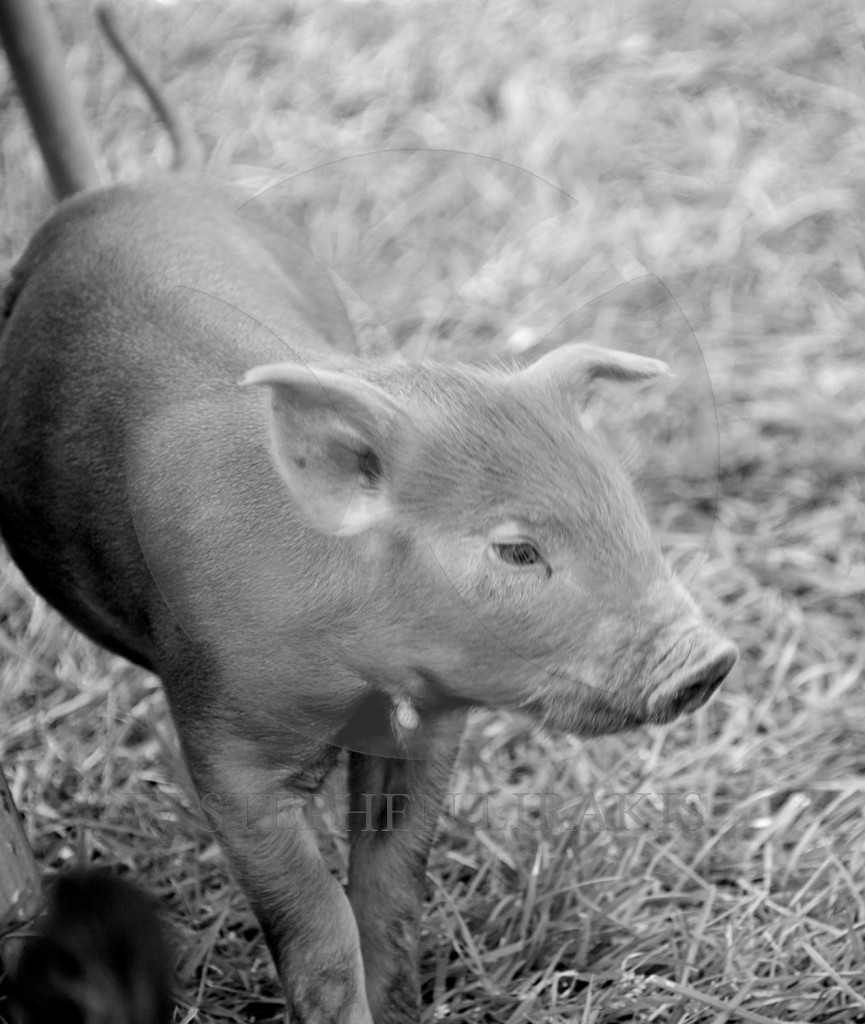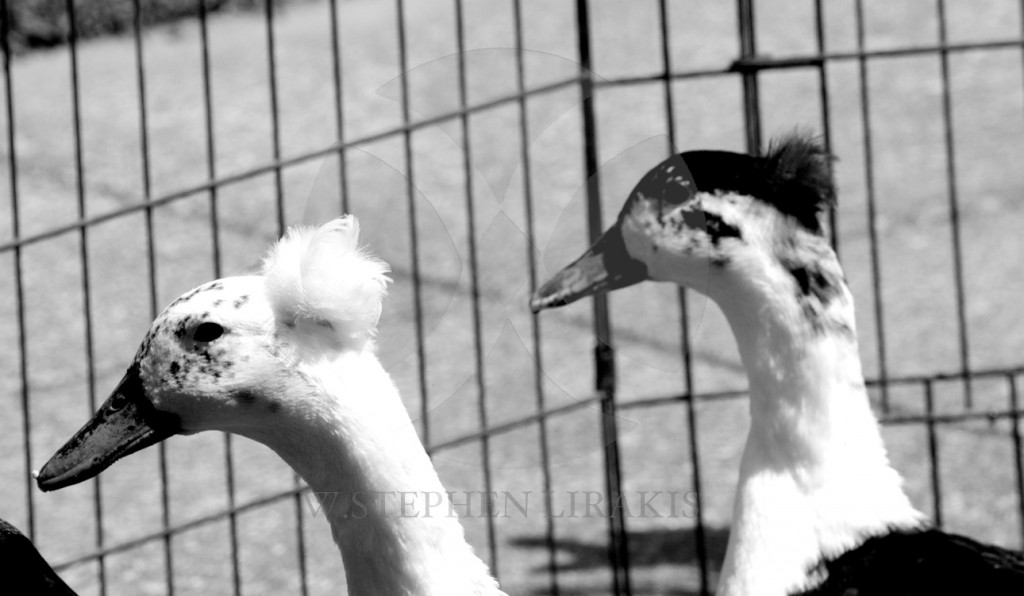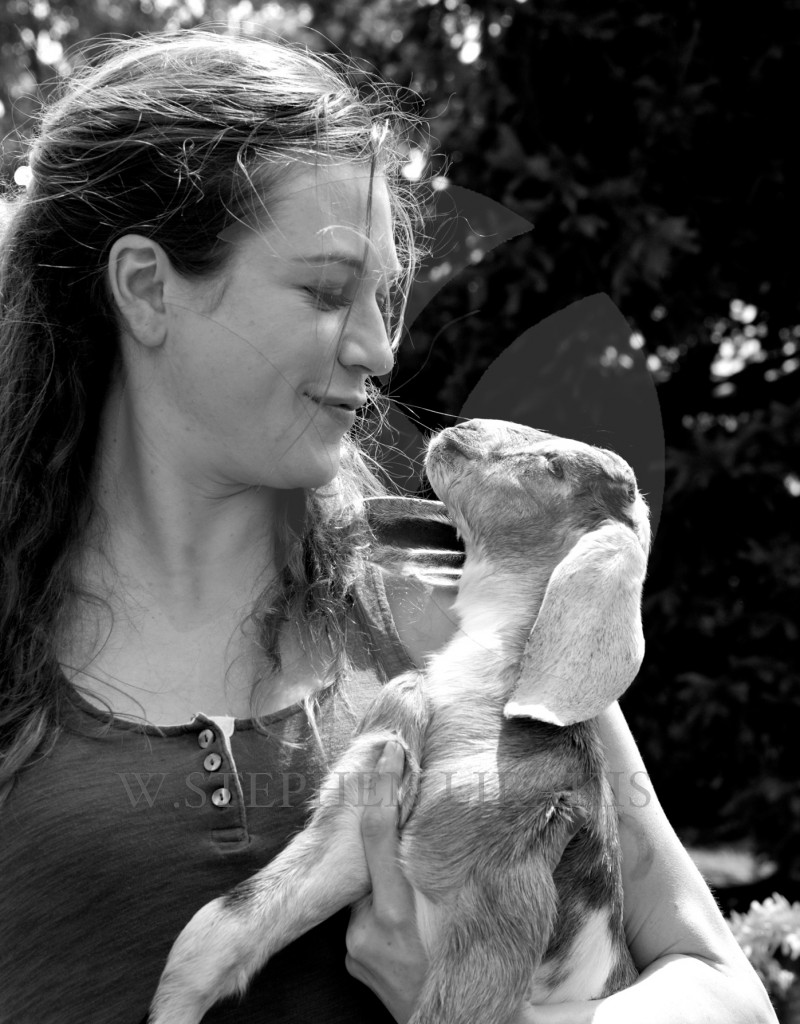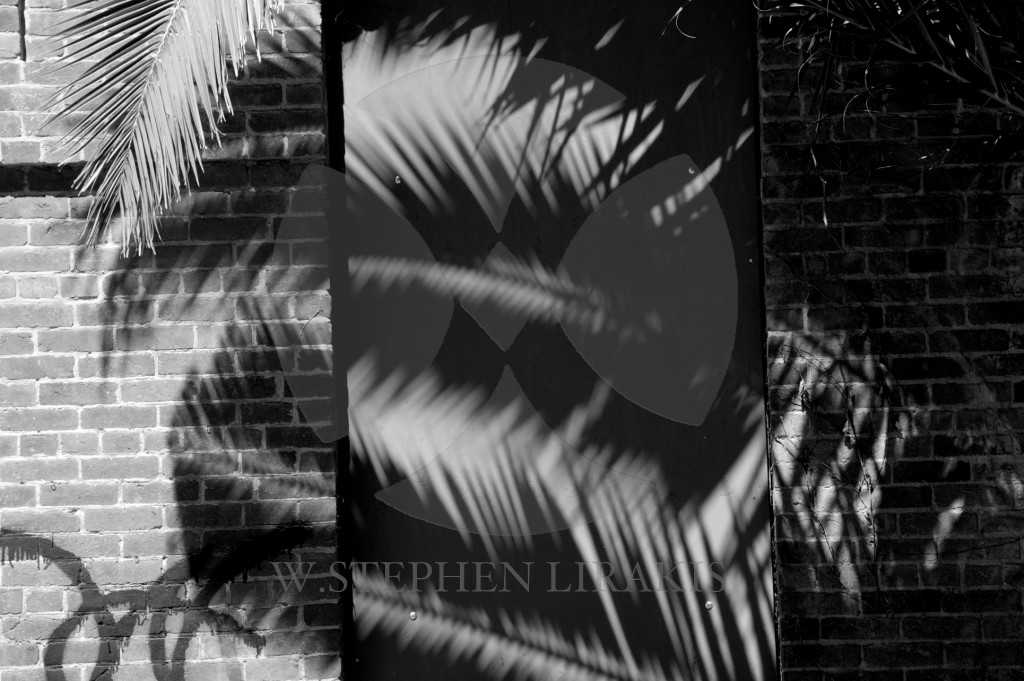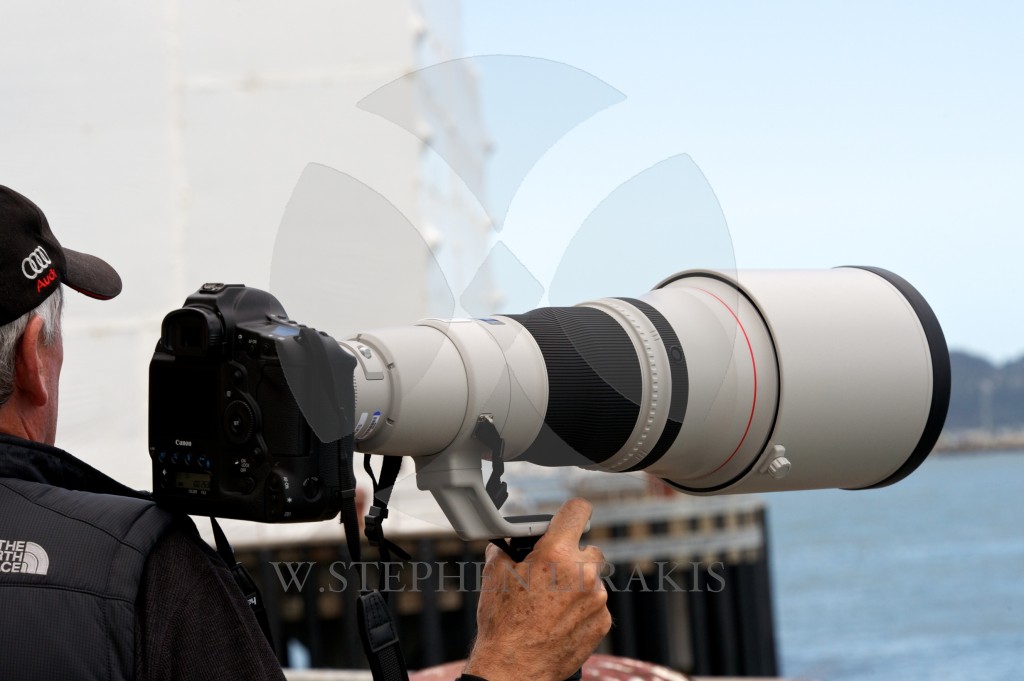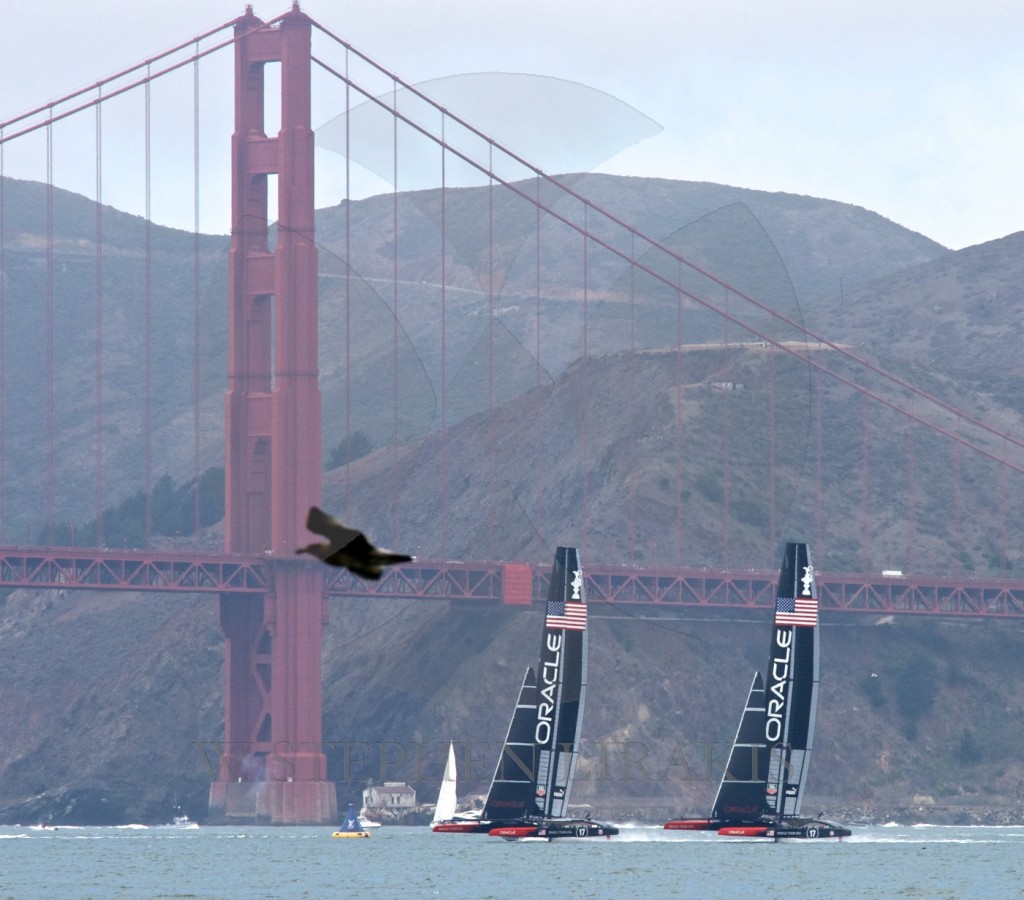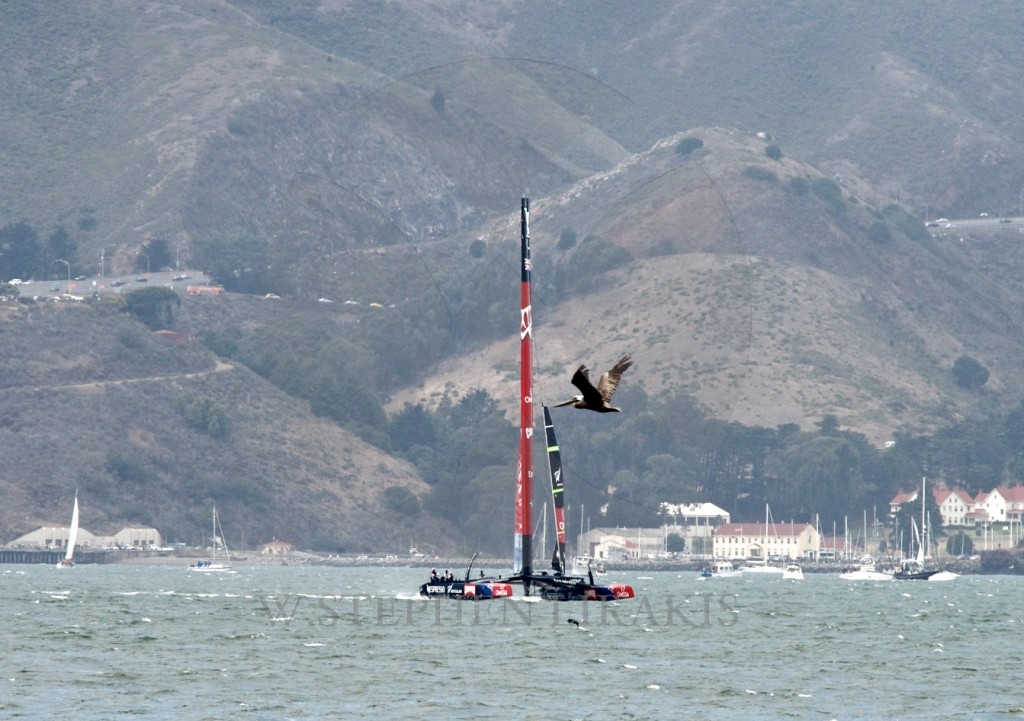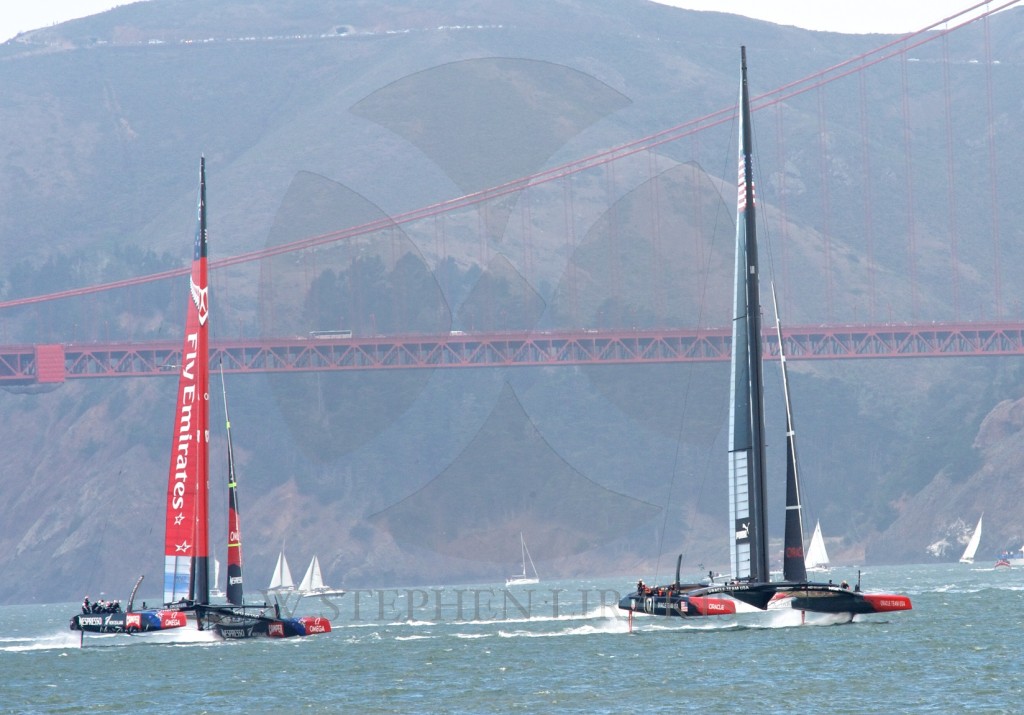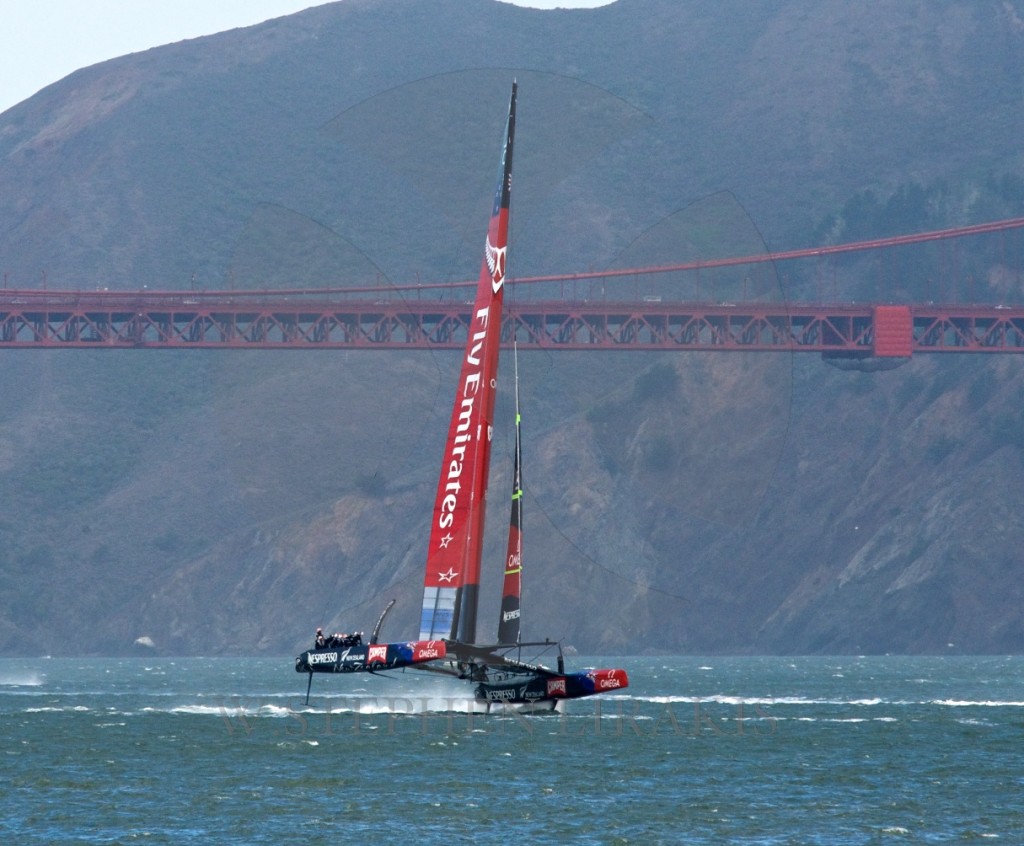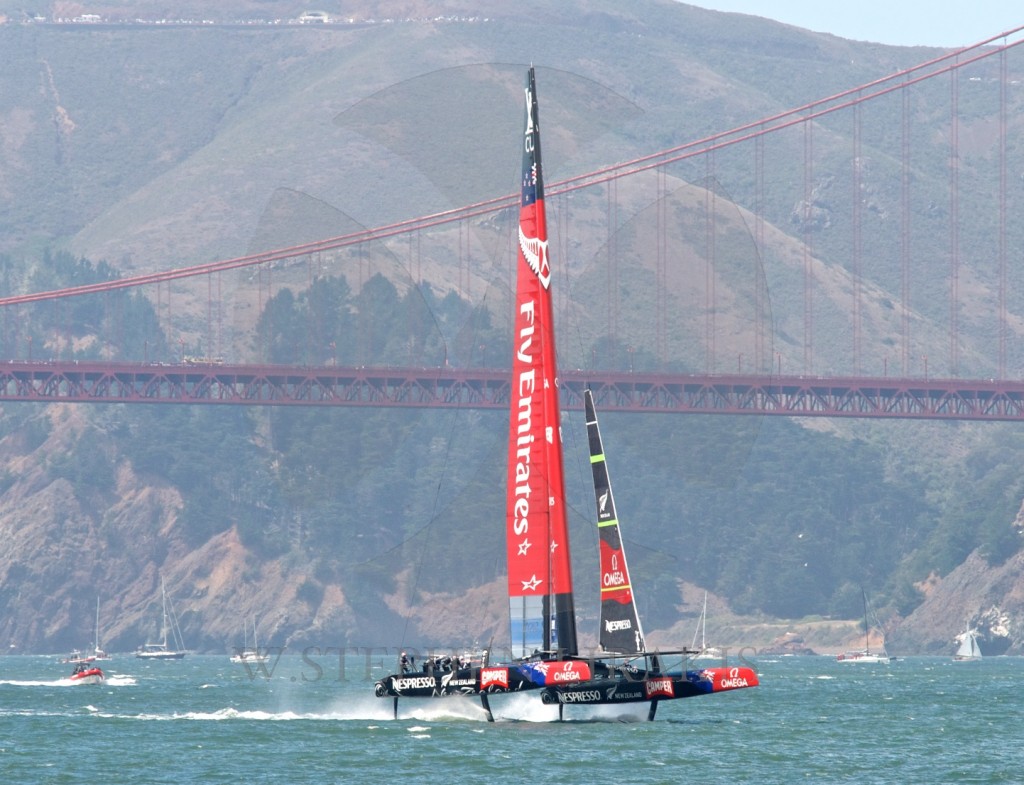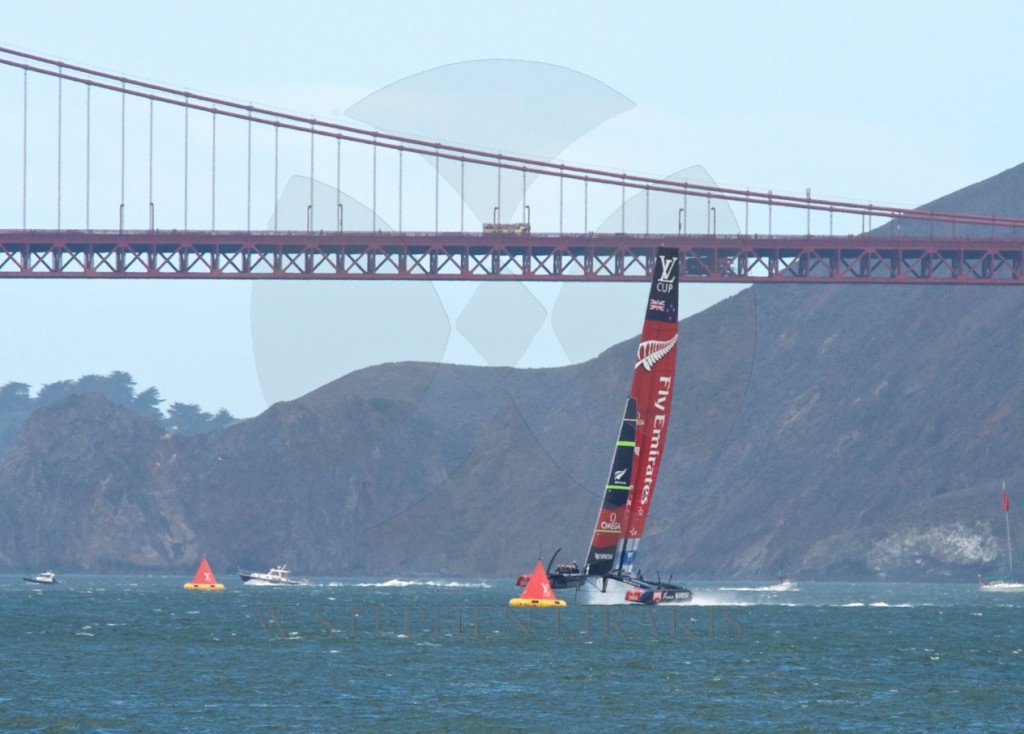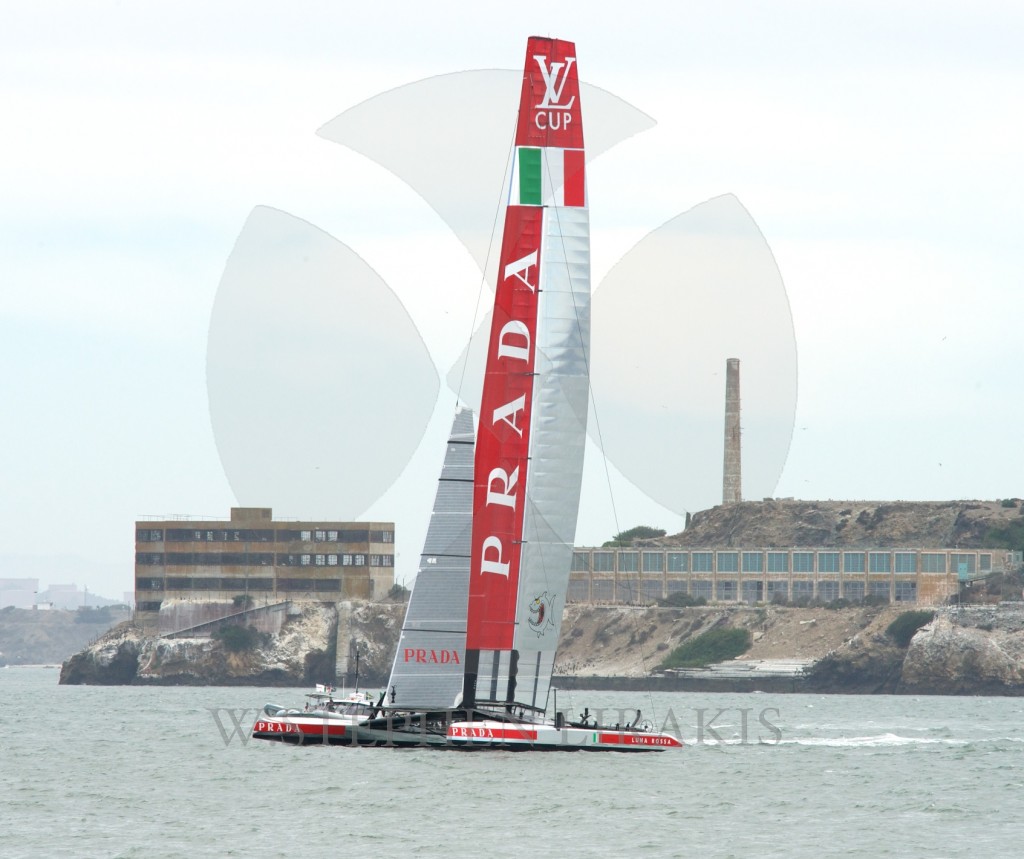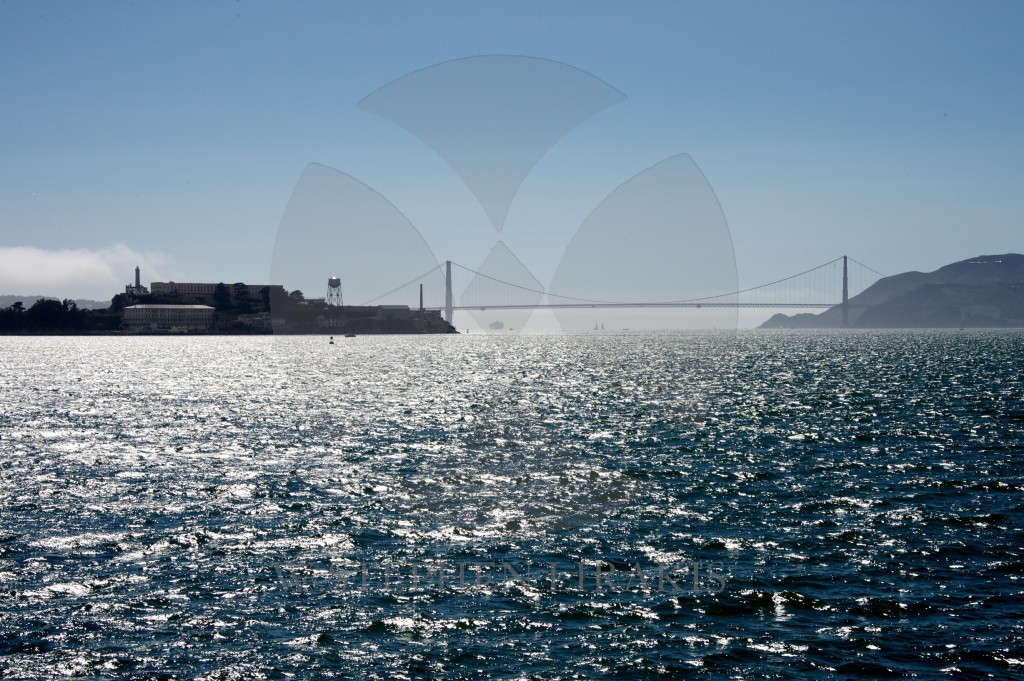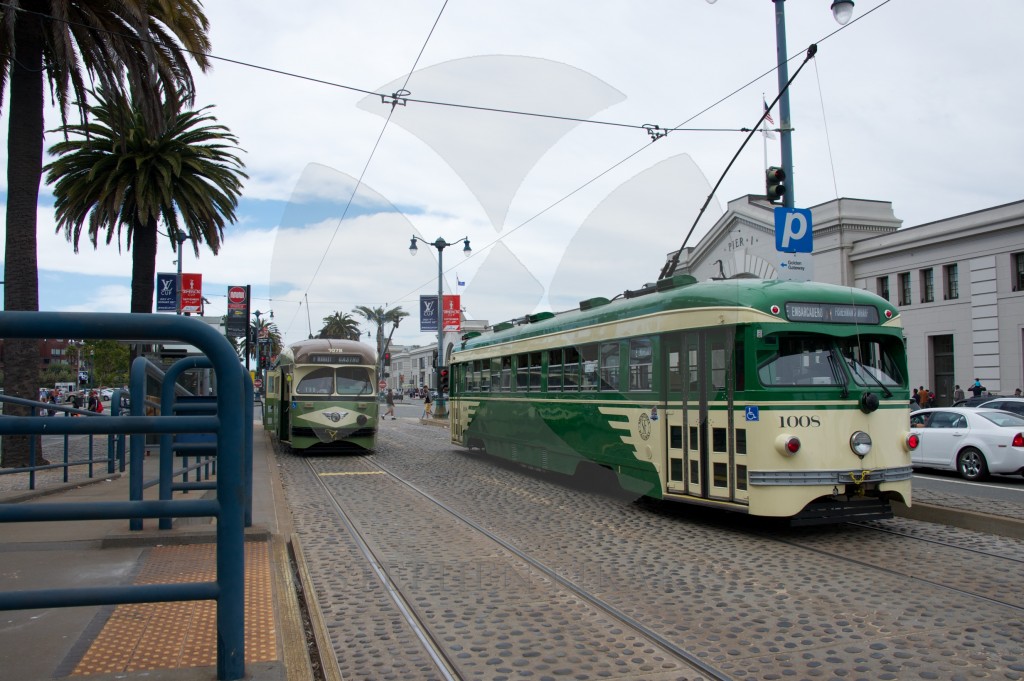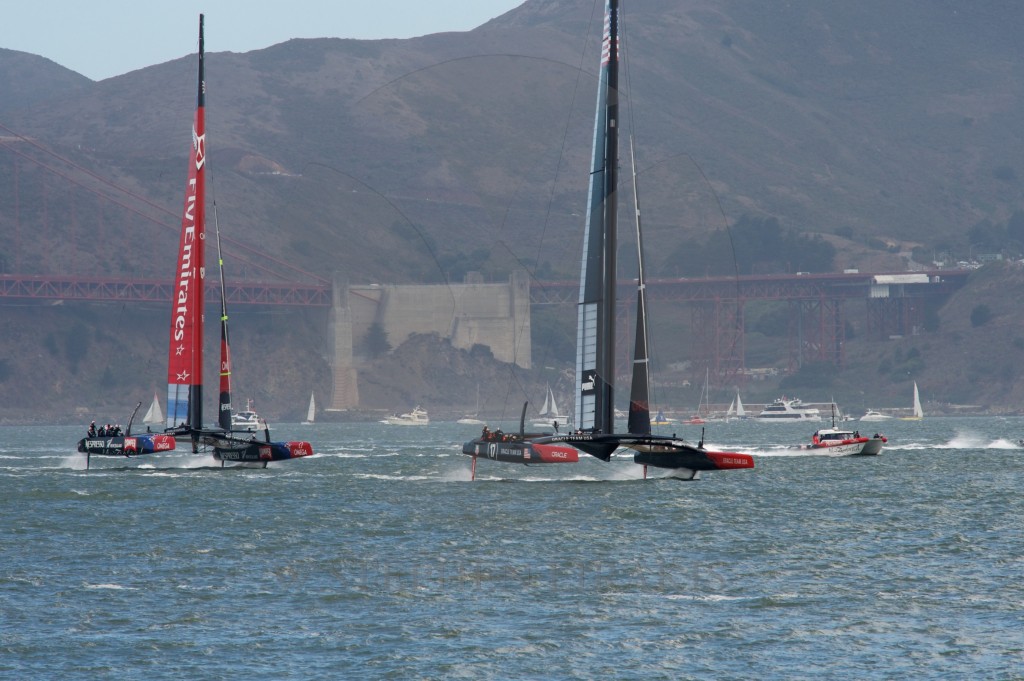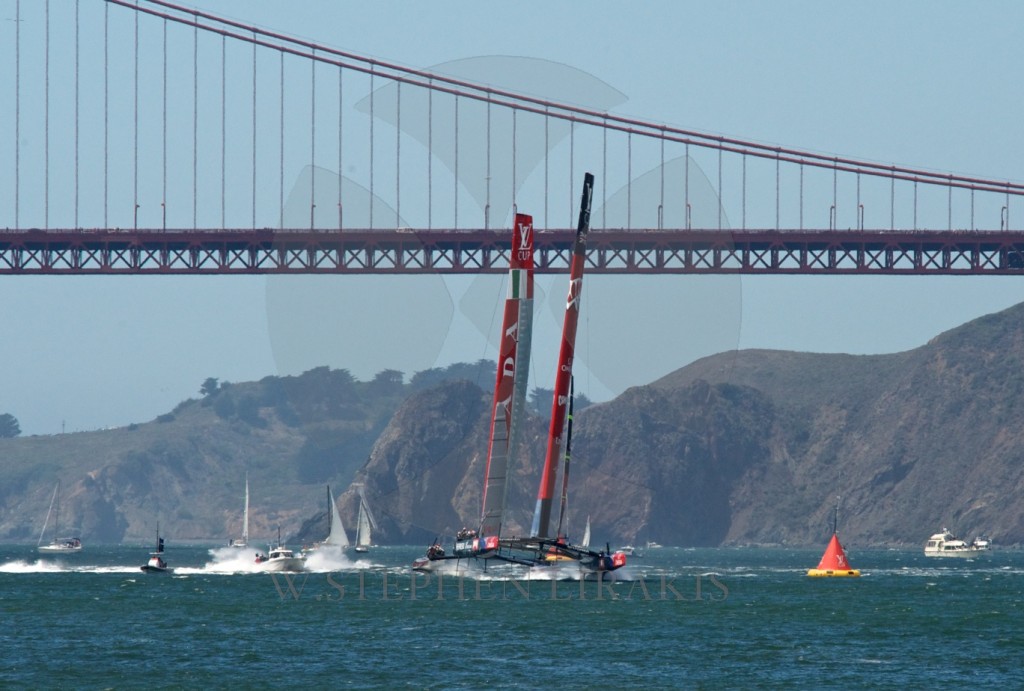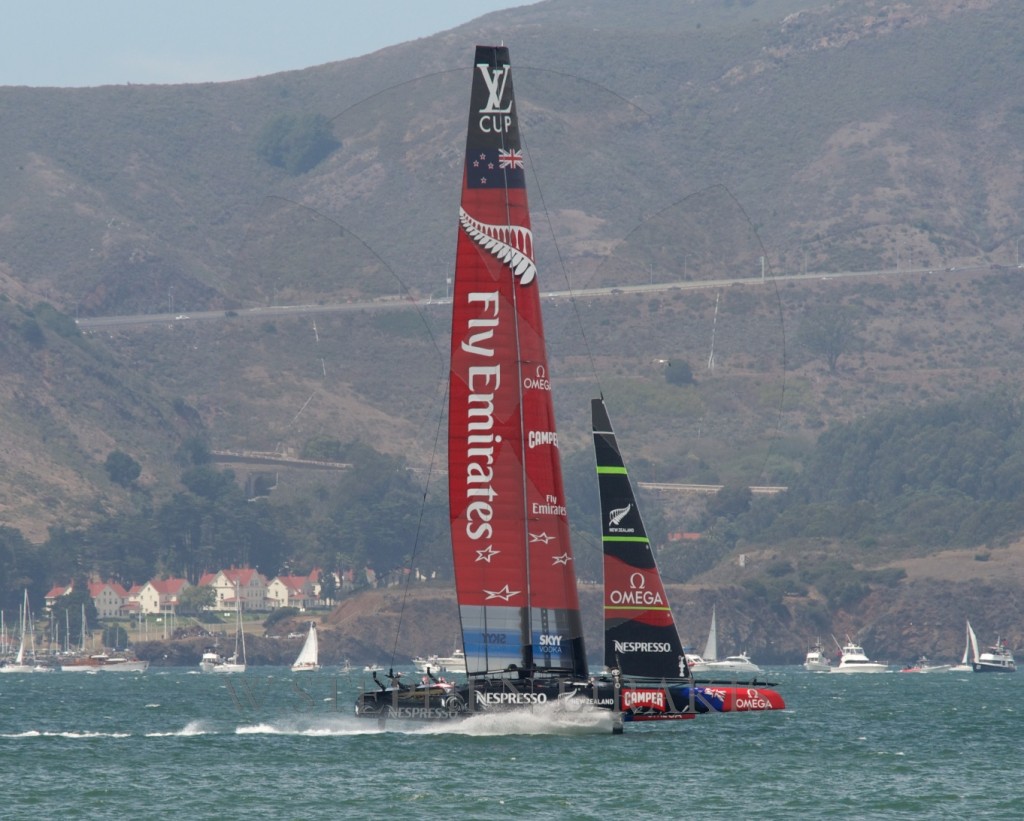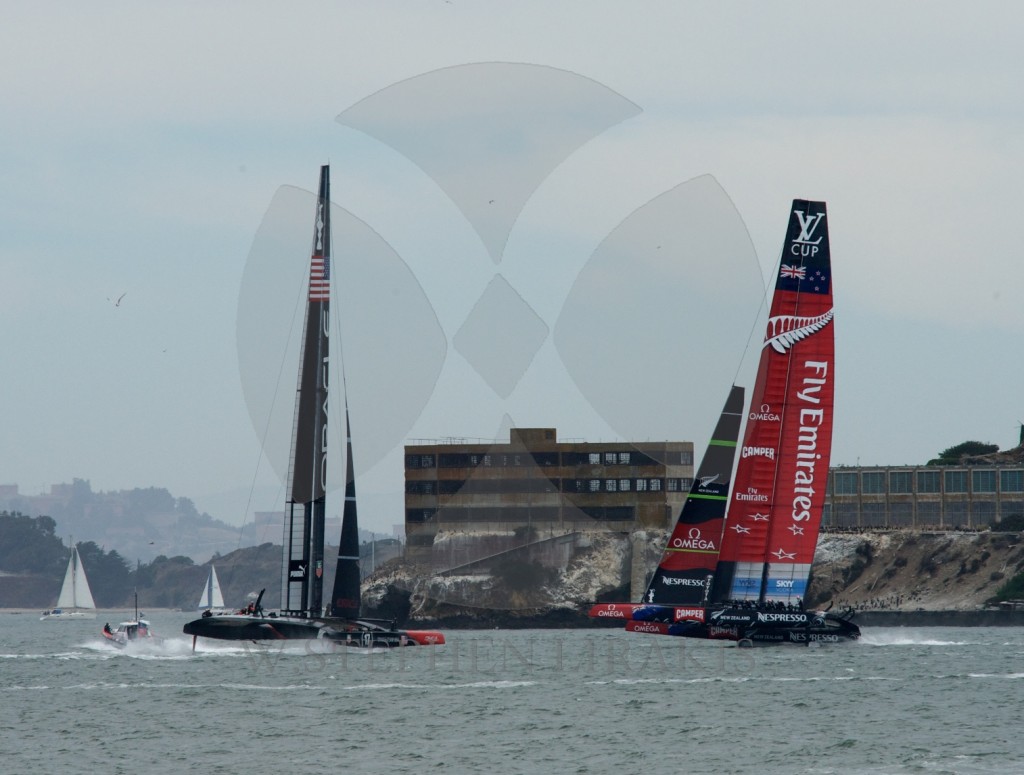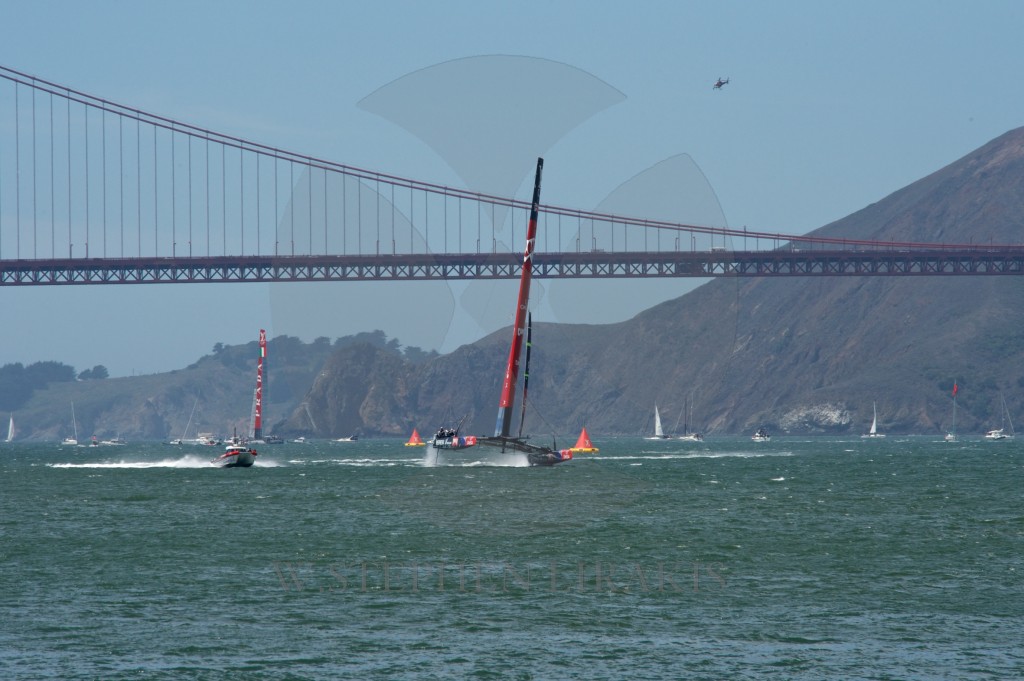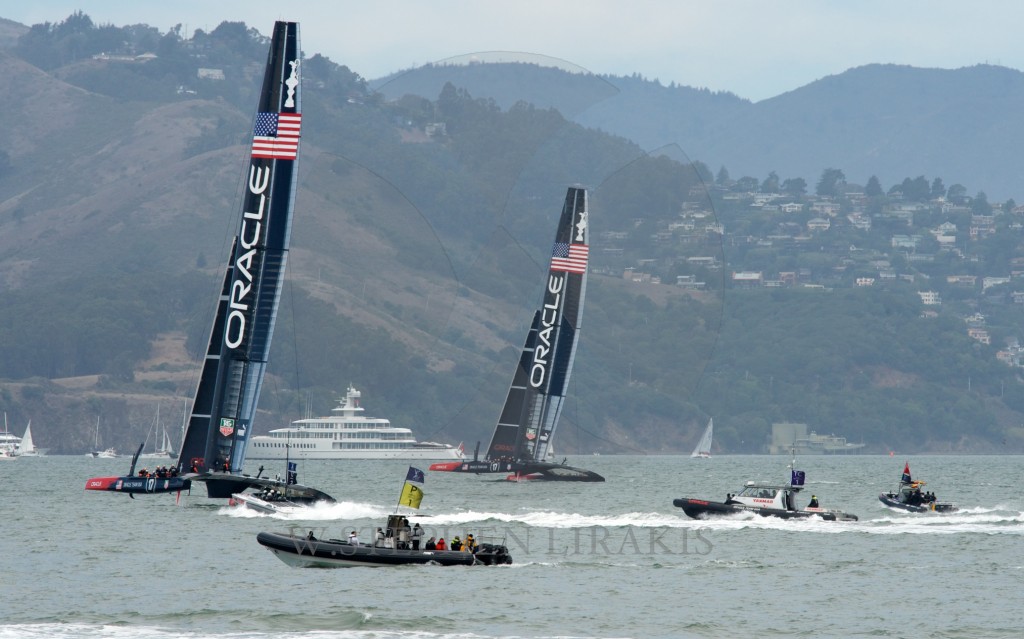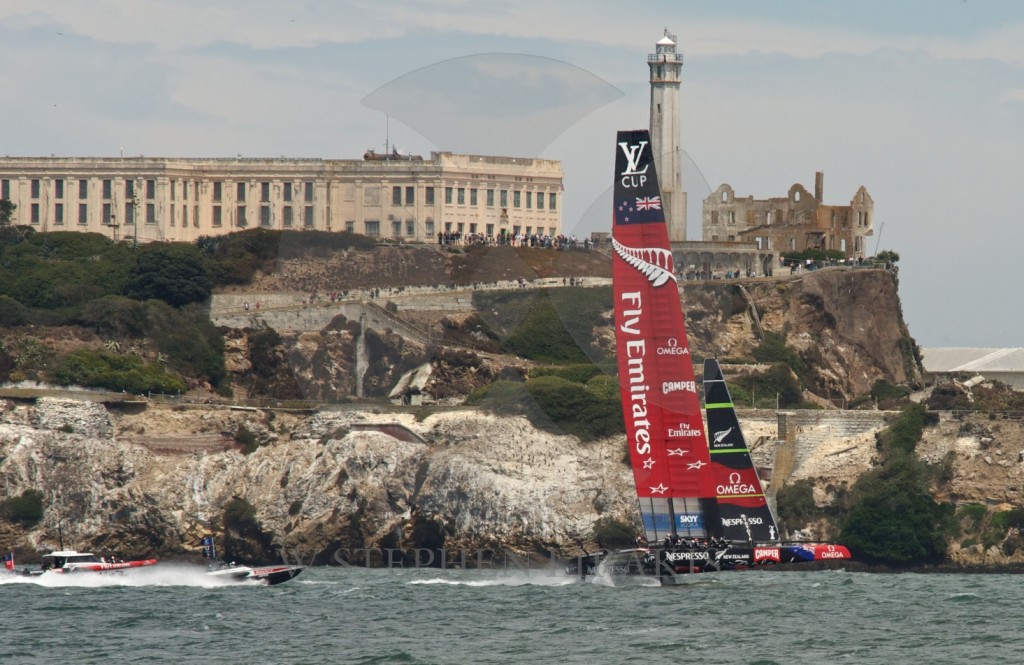A lot has been written and expressed about the performance of the 72’s. When someone like Glen Ashby speaks, we should all listen.
Glenn Ashby explains the Emirates Team New Zealand nosedive.
The most heart stopping moment of the 34th America’s Cup action so far was the huge bear away crash which saw the Emirates Team New Zealand AC72 nosedive at the windward mark in race two. (In case you have been living up a mountain with no internet or left the planet temporarily in the last few days the video clip is at the end of this article).
So what exactly went wrong on the Kiwi boat to trigger such a spectacular nose dive that it thew the majority of the crew into a tangled heap and flicked two of them unceremoniously into San Francisco Bay.
To find out from one who would know for sure, we got Emirates Team New Zealand wing trimmer Glenn Ashby to talk us through it.
First we asked Glenn to explain what he is doing to the massive wing sail when the boat goes around the windward mark.
“The goal for me is control the angle of heel as we transition from upwind to downwind. To do that I am basically twisting the wing profile and easing sheet as we initiate the turn. You are getting more and more power as you transition through that 90 degrees until you get to a sort of neutral ground where you are really in the meat of the power zone. At that point you have a low boat speed but a huge amount of thrust.
“So as you are punching through that power zone the guys will be winding the sheet and I will be sort of fanning the sheet to try to keep that angle of heel constant through the turn.
“Once you realise that you are through the power zone I’ll be immediately trying to stand the leech up or bring the head of the wing back, because if you punch through that zone and you don’t get the sheet back on and the power back into the wing the apparent wind is basically on your bow and you will do a big windward hull touchdown.
Then, because you will have board rake on the leeward side the leeward hull will be flying, your windward hull will be stuck in the water and you will have absolutely no power to turn the wing back up to lift that windward hull back out of the water again. That can actually turn itself into a bad bow down situation quite easily.
“By being able to pace the boat up enough, put the board rake on, even pop the boat up on to the foils before you start your turn, you are not having to drag the whole hull through the water, it won’t wash off enough speed and as you pass through the power zone you don’t have to ease as much sheet because the apparent stays forward. That means you can get the sheet on again much faster and that can give you a really good slingshot or whip out of the top mark. You will often see the boatspeed go from 30 knots to 45 knots in the space of a few seconds.”
So what happened during the second race to cause such a huge crash?
“The other day we just got into a really big, right hand heading puff as we went round the mark. It probably went from 15 or 16 knots to low twenties as we went around the mark. What that did was to widen and increase the density of the pressure in that power zone as we were punching through. It got to the stage where we were half way round and I was having to ease a huge amount more wing than I normally would – just with the extra thrust that we had.
“Unfortunately it was one of those bear aways where our leeward elevator pierced the surface at one stage. Once you lose the effect of that elevator which is basically holding the boat down you are effectively into an old school multihull bow down situation. It happened in an absolute blink of an eye. We have never had it happen before but that time the stars had aligned to give us that finger of God just as we got to the top mark.
“When you go back and look at the data on the breeze that we sailed into, it was a huge shift – possibly with a lot of sheer from top to bottom too – combined with a big increase in pressure. When you are sailing through the power zone you only need a half a knot or a knot of increase in pressure to make a massive difference to the power zone. We had a good three or four knots of increase as we went around and that was enough to load everything to a point where for a standard maneuver it would have been no problem; but we recognise that we were a bit foot to the floor with that one.”
Despite having gone though a crash which would have put most of us off going afloat ever again, Ashby said instead that the incident had actually given the Kiwi crew more confidence in their boat and how hard they could push it.
“It was a good one, but it was also a good example of Team New Zealand’s design and engineering capabilities to be able to create something that us as sailors can throw that sort of punishment at it and it will just pop up with nothing but a bit of cosmetic damage to the fairings.
“The boat performed extremely well. We have designed a boat that will allow us to push it really hard and it will be forgiving and look after us. That means we can keep our foot on the throttle. It let us know that we were probably pushing a bit too hard the other day.
Ashby, like the rest of the crew – other than helmsman Dean Barker who was braced behind the wheel – was thrown on the floor of the windward hull as the boat slowed dramatically from 41 knots to 13 in the blink of an eye.
“The biggest thing that stopped us was when the front beam hit the water and that’s when I went for a little bit of a tumble. It happened quick like every down the mine episode – whether it be on a Moth, A-Class, or a 49er, you generally get a split second before hand to say to yourself “Oh bugger!” and then you know you are on your way.”
Ashby maintained that having studied the nose dive in detail and debriefed it amongst the crew, they had no plans to make changes to their bear away technique.
“At the end of the day we are not going to change anything we do. In fact if anything it gives us more inspiration to keep pushing hard and learn the limits. We are still learning about the boats the whole time and we have really good confidence that we can pull off some pretty wild maneuvers in good breeze and shifty conditions and get away with it.
“Having never had that experience with the boat before it’s good to know that the boat is safe as house and that the performance is hopefully good enough as well.”



